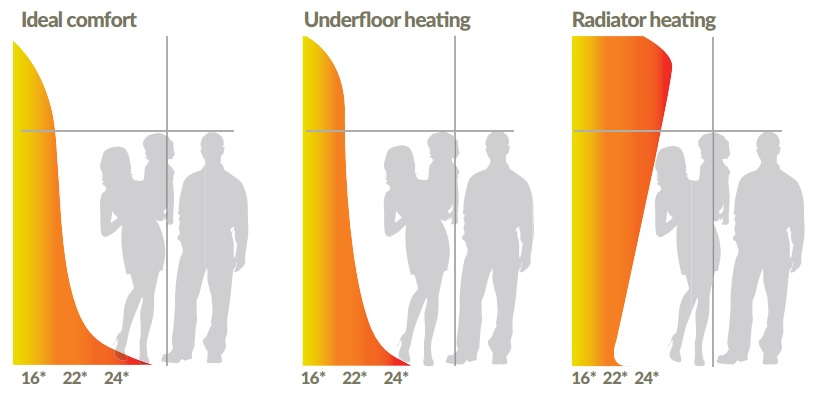Underfloor Heating Warm Up Times
| Introduction |
|---|
Underfloor heating systems can be designed to react very quickly to heating demands. The warm-up time of the system depends upon several factors. The time taken for the underfloor heating system to emit heat is dependent on the characteristics of the floor in terms of the construction, pipe centres and the floor finish and also the temperature of the water used in the underfloor heating system. Underfloor heating systems with pipe embedded in thick concrete slabs will have a longer warm up time than dry constructions systems such as those used in suspended, batten or floating floors. The room warm up time is also dependent on the heat loss of the building. The underfloor heating system must be sized to deal with the heat losses of the building however the system should also have additional capacity to ensure a fast response. For this reason OMNIE systems are designed with additional capacity to shorten this warm up time. |
| Understanding the output of an UFH system |
|---|
The heat output of the floor is related to the difference between the floor and room air temperature. The bigger the difference in the two temperatures the higher the heat output. Conversely as the room temperature rises and the two temperatures approach each other the heat output reduces. Therfore as a room warms up the output decreases. |
| Thermal Mass |
|---|
Concrete and screed floors will take slightly longer to warm up than dry timber systems and this is reflected in SAP which considers dry timber constructions to react in the same way as radiators and for concrete systems to take slightly longer. As a result of the various factors that determine warm up time no absolute figure can be given. However floors with poor U-values and pipe embedded in thick concrete slabs will take longer to warm up, but even these systems can operate effectively with good system design and controls. Please call us on 01392 36 36 05 for further advice. |

|

